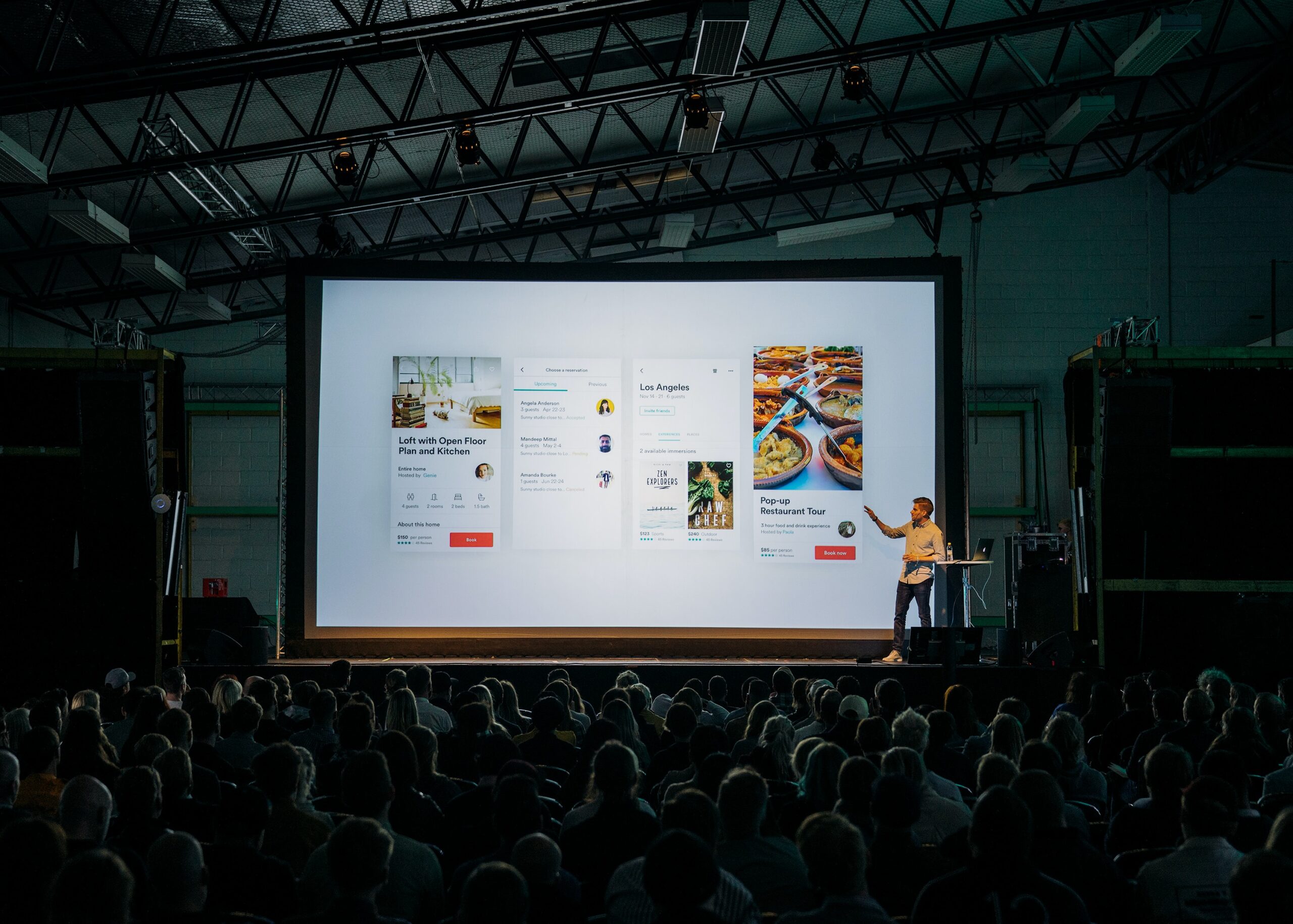Pinterest has emerged as a powerful platform for creative inspiration and discovery. As a marketer or business owner, understanding and implementing best practices for Pinterest creative is essential to captivate your audience and drive engagement. In this blog post, we will explore effective strategies and techniques to optimize your Pinterest creative. By following these best practices, you can enhance your presence on the platform, increase visibility for your brand, and maximize user engagement.
- Create Eye-Catching Visuals: Pinterest is a visual-first platform, making high-quality and captivating visuals crucial for success. Here are some best practices for creating eye-catching Pinterest creative:
a) Use high-resolution images: High-resolution visuals make a significant impact and attract attention. Ensure that your images are clear, crisp, and visually appealing.
b) Optimize image size: Pinterest recommends using vertical images with a 2:3 aspect ratio (e.g., 1000 x 1500 pixels). This size is ideal for optimal visibility in the Pinterest feed.
c) Use compelling and on-brand graphics: Incorporate visually appealing graphics, typography, and overlays that align with your brand identity. This helps create a cohesive and recognizable visual presence.
d) Utilize vibrant colors: Choose colors that are visually appealing and align with your brand’s aesthetics. Vibrant and bold colors tend to stand out and grab attention.
- Craft Engaging Pin Descriptions: While visuals are crucial, compelling pin descriptions play a vital role in attracting users and providing context. Follow these best practices for crafting engaging pin descriptions:
a) Use relevant keywords: Incorporate relevant keywords in your pin descriptions to optimize your content for search. Conduct keyword research to identify the terms your target audience is using.
b) Keep descriptions concise: Aim for clear and concise descriptions that provide a brief overview of the content and entice users to click or save the pin. Avoid long paragraphs that can overwhelm users.
c) Add a call to action (CTA): Encourage users to take action by including a clear CTA in your pin descriptions. Whether it’s “Learn More,” “Shop Now,” or “Save for Later,” a well-placed CTA can increase user engagement.
d) Provide helpful information: Use pin descriptions to provide additional context, tips, or relevant information about the content. This can help users understand the value they will gain by engaging with your pin.
- Optimize for Pinterest SEO: Optimizing your Pinterest creative for SEO is essential to increase discoverability and reach. Follow these best practices for Pinterest SEO:
a) Keyword research: Conduct thorough keyword research to understand the terms and phrases your target audience is searching for. Incorporate these keywords strategically into your pin descriptions, board titles, and board descriptions.
b) Board organization: Create boards with descriptive titles that align with your content and target keywords. Arrange your pins in a logical and user-friendly manner to enhance discoverability.
c) Pin titles: Craft descriptive and keyword-rich titles for your pins. This helps Pinterest understand the context of your content and improves the chances of appearing in relevant search results.
d) Alt text for images: When uploading images to Pinterest, add alt text that includes relevant keywords. Alt text helps search engines understand the content of the image, increasing its visibility in search results.
- Embrace Rich Pins and Video Content: To further enhance engagement and provide more value to users, consider utilizing rich pins and video content on Pinterest:
a) Rich pins: Rich pins provide additional information directly on the pin itself. They are available for different content types, such as articles, products, recipes, and more. Rich pins offer increased visibility and engagement by displaying real-time information.
b) Video content: Video content on Pinterest can be highly engaging and captivating. Create short and visually appealing videos that align with your brand and resonate with your target audience. Optimize videos with attention-grabbing thumbnails and compelling titles.
Conclusion: Mastering Pinterest creative is essential to maximize your brand’s visibility and engagement on the platform. By implementing these best practices, such as creating eye-catching visuals, crafting engaging pin descriptions, optimizing for Pinterest SEO, and embracing rich pins and video content, you can elevate your presence on Pinterest and connect with your target audience effectively. Remember to consistently monitor and analyze the performance of your pins to refine your strategy and drive even better results. With a thoughtful and strategic approach to Pinterest creative, you can unlock the full potential of this visually-driven platform and achieve your marketing goals.
How can I optimize my Pinterest creative to maximize engagement and click-through rates?
Pinterest has become a go-to platform for inspiration and discovery, making it a valuable channel for businesses to showcase their offerings. However, to stand out among the sea of pins, it’s crucial to optimize your Pinterest creative to maximize engagement and click-through rates. In this part of the blog post, we will explore effective strategies and best practices to optimize your Pinterest creative, ensuring that your pins capture attention, drive engagement, and ultimately lead to increased click-through rates. By implementing these techniques, you can harness the full potential of Pinterest and achieve your marketing goals.
- Create Compelling Visuals: Visually captivating pins are the key to capturing users’ attention and encouraging engagement. Here are some best practices for creating compelling Pinterest visuals:
a) High-quality images: Use high-resolution images that are clear, sharp, and visually appealing. Blurry or pixelated images can deter users from engaging with your pins.
b) Vertical orientation: Optimize your pins for the vertical format, as they tend to perform better on Pinterest. Vertical pins take up more screen space, increasing their visibility and impact.
c) Attention-grabbing design: Incorporate eye-catching colors, compelling graphics, and typography that align with your brand. Create visually appealing compositions that stand out in the Pinterest feed.
d) Clear branding: Include your brand’s logo or watermark on your pins to reinforce brand recognition. This helps users associate your pins with your business and builds trust.
- Craft Persuasive Pin Descriptions: While visuals are essential, persuasive pin descriptions play a crucial role in enticing users to engage further. Consider the following best practices when writing pin descriptions:
a) Incorporate relevant keywords: Conduct keyword research to identify the keywords and phrases your target audience is using. Incorporate these keywords naturally into your pin descriptions to improve discoverability.
b) Be concise and compelling: Capture users’ attention with concise and engaging pin descriptions. Clearly communicate the value and benefit of engaging with your pin, sparking curiosity and encouraging clicks.
c) Use action-oriented language: Include strong calls to action in your pin descriptions to prompt users to take the desired action. Examples include “Explore now,” “Discover more,” or “Save for later.”
d) Provide helpful information: Share additional details, tips, or insights related to your pin’s content. This establishes your expertise and adds value for users, increasing their likelihood of engaging.
- Optimize for Pinterest SEO: To increase visibility and attract relevant users to your pins, optimizing for Pinterest SEO is crucial. Follow these best practices:
a) Relevant board titles: Create board titles that accurately describe the content within them. Incorporate relevant keywords to improve your boards’ visibility in Pinterest search results.
b) Descriptive board descriptions: Write detailed board descriptions that provide context and include relevant keywords. Pinterest uses this information to understand the content and rank it appropriately.
c) Strategic pin titles: Craft clear and keyword-rich titles for your pins. Use descriptive language that accurately reflects the content and attracts users’ attention.
d) Hashtags: Utilize hashtags strategically in your pin descriptions to increase discoverability. Research popular and relevant hashtags to include in your descriptions, ensuring they are specific to your pin’s content.
- Test and Iterate: Continuously testing and iterating your Pinterest creative is vital to optimize engagement and click-through rates. Consider the following strategies:
a) A/B testing: Experiment with different visuals, pin descriptions, and formats to identify what resonates best with your audience. Test variations of images, colors, headlines, and calls to action to determine the most effective combination.
b) Analyze Pinterest analytics: Utilize Pinterest’s analytics tools to gain insights into the performance of your pins. Monitor metrics such as impressions, click-through rates, and saves to understand what drives engagement and refine your strategy accordingly.
c) Learn from successful pins: Study your most successful pins and identify patterns or common elements that contribute to their performance. Apply these insights to future pin creations.
d) Stay updated with trends: Keep up-to-date with the latest trends and changes in the Pinterest platform. This allows you to adapt your creative approach to align with current user preferences and behaviors.
Conclusion: Optimizing your Pinterest creative is essential for maximizing engagement and click-through rates. By creating compelling visuals, crafting persuasive pin descriptions, optimizing for Pinterest SEO, and continuously testing and iterating, you can create a powerful Pinterest presence that captivates your target audience and drives meaningful results. Remember to monitor analytics, learn from successful pins, and adapt your strategy based on trends to stay ahead. With a strategic approach and attention to detail, you can unlock the full potential of Pinterest as a marketing platform and achieve your business objectives.
What are the key elements of a compelling and visually appealing Pinterest pin?
Pinterest is a visual discovery platform that thrives on captivating imagery. To make your content stand out and attract engagement, it’s crucial to create compelling and visually appealing Pinterest pins. In this part of the blog post, we will explore the key elements that contribute to the success of a Pinterest pin in terms of visual appeal. By understanding and implementing these elements, you can create pins that capture attention, inspire action, and drive traffic to your website. Let’s dive in and unlock the secrets to crafting irresistible Pinterest pins.
- Eye-Catching Imagery: The foundation of a visually appealing Pinterest pin lies in eye-catching imagery. Consider the following elements:
a) High-resolution photos: Use high-quality, crisp, and clear images that grab attention and create a sense of professionalism.
b) Vibrant colors: Opt for bold and vibrant colors that catch the eye and evoke emotions. However, ensure that the colors align with your branding and convey the right message.
c) Balanced composition: Create a visually pleasing composition by arranging the elements in your pin in a balanced and aesthetically pleasing manner. Pay attention to the rule of thirds, leading lines, and symmetry to create a harmonious visual flow.
d) Unique perspectives: Experiment with different angles and perspectives to add visual interest. Unconventional viewpoints can make your pin stand out and attract attention.
- Engaging Typography: Typography plays a crucial role in conveying information and evoking emotions. Here are some tips for using typography effectively in Pinterest pins:
a) Clear and legible fonts: Choose fonts that are easy to read, even in smaller sizes. Avoid overly decorative fonts that may hinder legibility.
b) Font hierarchy: Use different font sizes and styles to create a hierarchy of information. Highlight important keywords or phrases by making them larger or bolder.
c) Consistent branding: Use fonts that align with your brand’s visual identity. Consistency in typography across your pins reinforces brand recognition.
d) Play with typography effects: Experiment with different text effects, such as shadows, gradients, or overlays, to make your text visually appealing and stand out against the background.
- Thoughtful Color Palette: Color choice greatly impacts the overall visual appeal of your Pinterest pins. Consider the following aspects when selecting a color palette:
a) Brand colors: Incorporate your brand’s colors into your pins to maintain consistency and reinforce brand recognition.
b) Complementary colors: Choose colors that complement each other to create a visually harmonious pin. Use color theory principles, such as the color wheel, to find pleasing combinations.
c) Contrast for legibility: Ensure that the text and visuals have sufficient contrast to ensure readability. Use light text on a dark background or vice versa to create a visually striking effect.
d) Color psychology: Understand the psychological associations of different colors and use them strategically to evoke specific emotions or responses. For example, blue may convey trust and serenity, while red may evoke passion and urgency.
- Engaging Call-to-Action: A compelling call-to-action (CTA) encourages users to take the desired action after seeing your pin. Consider the following tips for creating engaging CTAs:
a) Be specific: Clearly communicate the action you want users to take, such as “Shop Now,” “Discover More,” or “Save for Later.”
b) Urgency and scarcity: Create a sense of urgency or scarcity in your CTA by using phrases like “Limited Time Offer” or “Only a Few Left.” This can motivate users to act quickly.
c) Placement and design: Position the CTA prominently within your pin, making it easy to locate and click. Experiment with different CTA designs, such as buttons or overlays, to draw attention.
d) Benefit-driven language: Highlight the benefits users will gain by taking the desired action. Frame your CTA in a way that appeals to their needs and desires.
Conclusion: Crafting visually appealing and compelling Pinterest pins is essential for capturing attention, inspiring action, and driving traffic to your website. By focusing on eye-catching imagery, engaging typography, thoughtful color palettes, and persuasive CTAs, you can create pins that stand out in the sea of content on Pinterest. Remember to align your design choices with your brand’s identity and target audience preferences. With a strategic approach and attention to detail, you can create irresistible Pinterest pins that drive engagement, increase click-through rates, and ultimately achieve your marketing goals.
How can I leverage Pinterest’s audience targeting options to reach my desired audience effectively?
Pinterest is not just a platform for inspiration; it’s also a powerful marketing tool that allows businesses to reach their desired audience effectively. With Pinterest’s audience targeting options, you can tailor your content to specific user segments, ensuring that your pins are seen by the right people. In this final part of the blog post, we will explore how you can leverage Pinterest’s audience targeting options to reach your desired audience effectively. By understanding and utilizing these features, you can maximize the impact of your Pinterest marketing strategy and drive meaningful engagement. Let’s dive in and unlock the potential of audience targeting on Pinterest.
- Understand Your Target Audience: Before diving into Pinterest’s audience targeting options, it’s crucial to have a clear understanding of your target audience. Consider the following:
a) Demographics: Identify the key demographic traits of your ideal audience, such as age, gender, location, and language preferences.
b) Interests and Behaviors: Determine the interests, hobbies, and behaviors that align with your brand or product. This will help you connect with users who are more likely to engage with your content.
c) Purchase Intent: Consider the stage of the customer journey your target audience is in. Are they actively seeking information, comparing options, or ready to make a purchase? Understanding their purchase intent will guide your targeting strategy.
- Explore Pinterest’s Audience Targeting Options: Pinterest provides several audience targeting options to help you refine your reach. Familiarize yourself with these features and select the ones that align with your target audience:
a) Keyword Targeting: Utilize relevant keywords that resonate with your audience’s interests and preferences. Pinterest will show your pins to users searching for or engaging with content related to those keywords.
b) Interest Targeting: Reach users based on their expressed interests. Pinterest analyzes user behavior and engagement to determine their interests. Select relevant interest categories or specific interests to narrow down your audience.
c) Demographic Targeting: Refine your reach by specifying demographic traits such as age, gender, location, and language preferences. This allows you to target users who are more likely to engage with your content based on these factors.
d) Visitor Retargeting: Reach users who have previously visited your website or interacted with your Pinterest content. Install the Pinterest Tag on your website to track user behavior and create custom audiences for retargeting.
e) Actalike Targeting: Expand your reach by targeting users who have similar characteristics to your existing audience or custom audience. Pinterest’s algorithm identifies users with similar interests and behaviors to those of your existing audience.
- Refine Your Targeting Strategy: To optimize your audience targeting on Pinterest, consider the following tips:
a) Experiment with Different Targeting Options: Test different combinations of targeting options to identify what works best for your specific goals and audience. Refine your strategy based on the results and feedback from Pinterest’s analytics.
b) Test Multiple Ad Sets: Create multiple ad sets with different targeting parameters to reach different segments of your target audience. This allows you to customize your messaging and visuals to resonate with specific groups.
c) Use Audience Insights: Leverage Pinterest’s audience insights to gain valuable information about your target audience’s interests, preferences, and behaviors. This data can inform your targeting strategy and content creation process.
d) Monitor and Optimize: Regularly review your campaign performance and make data-driven optimizations. Identify underperforming targeting options and adjust them accordingly. Keep an eye on click-through rates, engagement metrics, and conversions to gauge the effectiveness of your targeting efforts.
- Create Engaging and Relevant Pins: While audience targeting is crucial, it’s equally important to create engaging and relevant pins. Even with the right audience, your content needs to capture their attention and compel them to take action. Consider the following tips:
a) Visual Appeal: Use high-quality images and visually compelling designs to grab attention. Optimize your visuals for Pinterest’s vertical format and choose images that resonate with your target audience.
b) Clear Messaging: Craft concise and persuasive copy that communicates the value of your product or service. Highlight key benefits and use language that resonates with your audience.
c) Call to Action (CTA): Include a clear and compelling CTA in your pins to encourage users to take the desired action. Experiment with different CTAs to find what resonates best with your audience.
d) Relevance: Ensure your pins are relevant to your target audience’s interests and needs. Tailor your content to align with the specific targeting options you have chosen.
Conclusion: Leveraging Pinterest’s audience targeting options is a powerful way to ensure that your pins reach the right people. By understanding your target audience, exploring the available targeting features, refining your strategy, and creating engaging and relevant pins, you can maximize the effectiveness of your Pinterest marketing efforts. Keep a close eye on your campaign performance, monitor audience insights, and make data-driven optimizations to continuously improve your results. With a strategic approach and a focus on audience targeting, you can reach your desired audience effectively and drive meaningful engagement on Pinterest.





